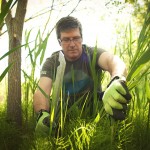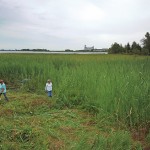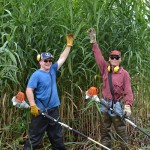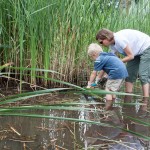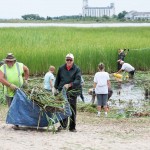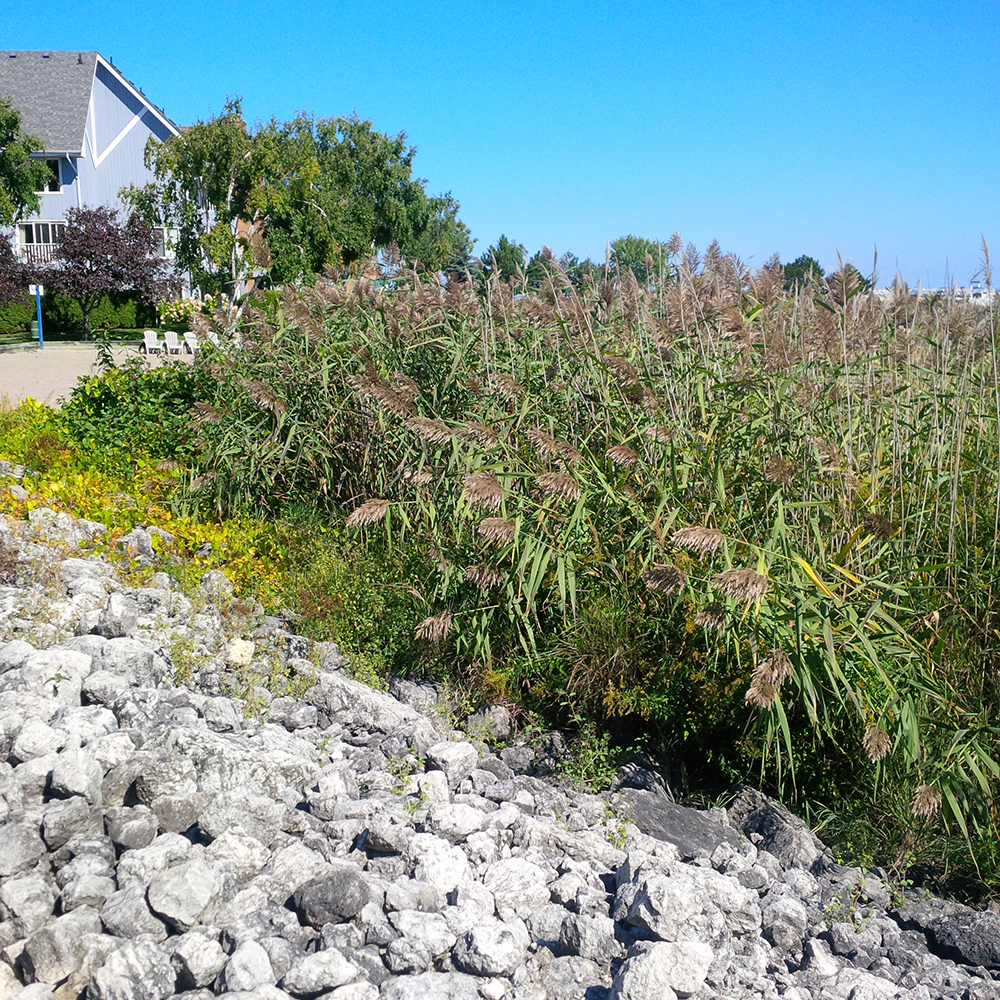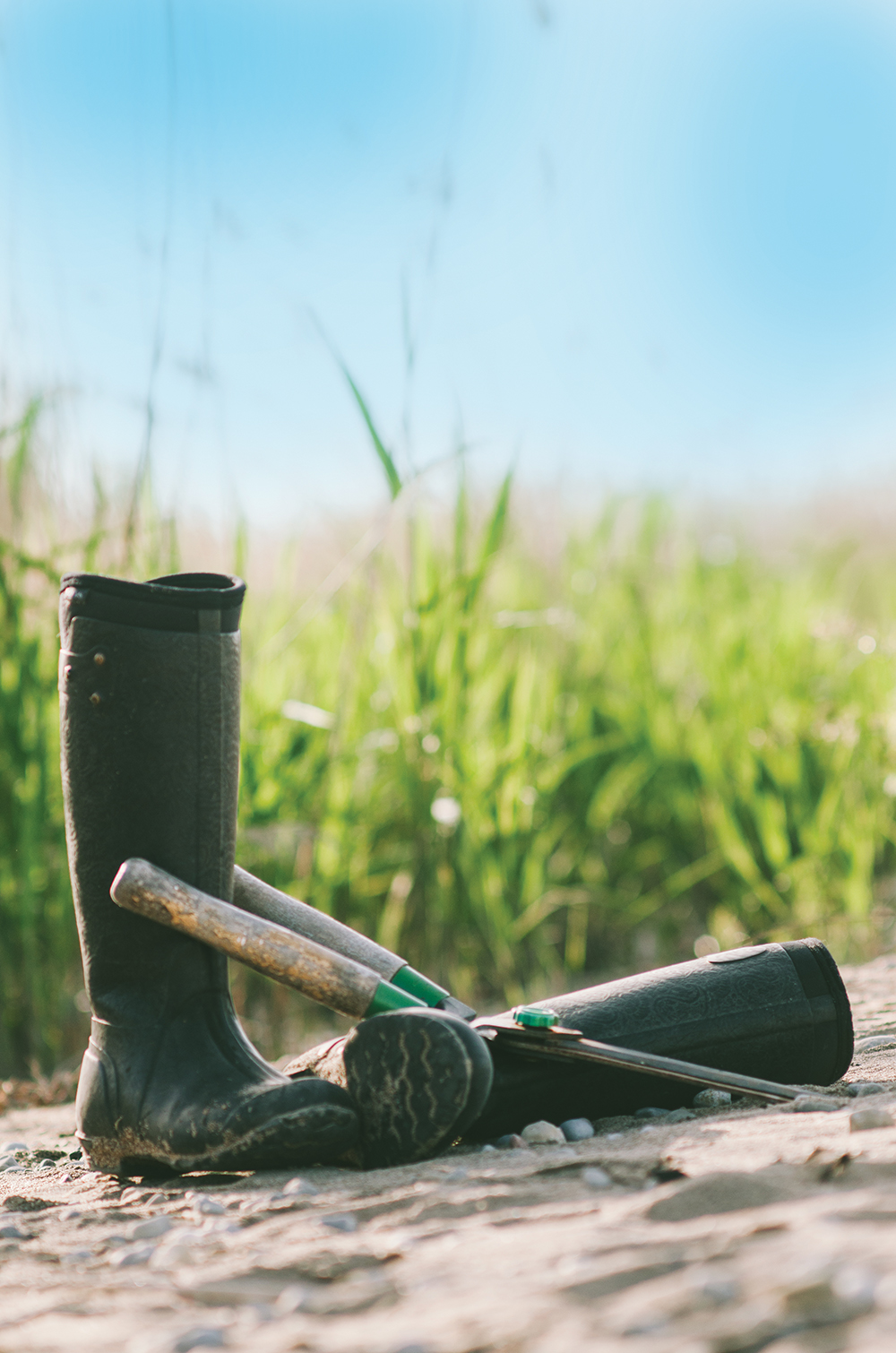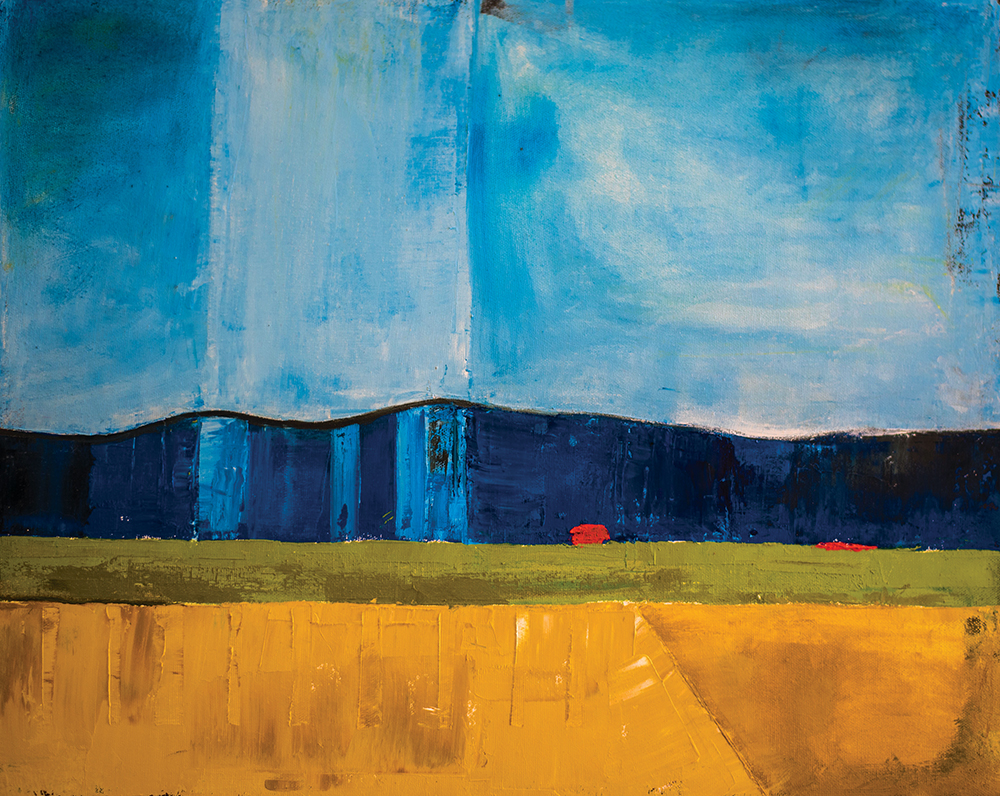A monster plant is taking over our wetlands, shorelines and roadsides, choking out other plants and wildlife. What is it and how can we fight it?
stories by Marc Huminilowycz
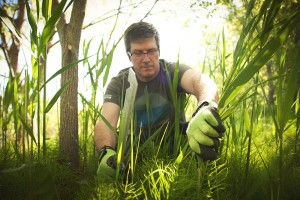
There is an alien invasion happening in Southern Georgian Bay. Aggressive green organisms, which arrived here from afar and colonized our region along with other parts of Ontario in the last century, are spreading their seeds and growing their numbers, wreaking havoc on our communities and destroying all other life in their path. The continued efforts of a few brave souls to combat the aliens’ relentless advance, along with education to identify the invaders and keep them from running amok, are, if not eradicating the green monsters, at least keeping them contained. But the battle goes on.
This alien invasion is a close encounter of the herbivorous kind, posing no direct threat to human life but menacing our natural environment and all of its inhabitants, which ultimately threatens our way of life. The alien is a grassy plant species named phragmites australis (known colloquially as invasive phragmites, European common reed, or more simply, phrag), which originated in Eurasia. Like so many invasive species, it is difficult to say exactly how it arrived in Southern Georgian Bay, but it appears determined to stay.
These aggressive plants, which grow up to 18 feet (5 metres) high in stands of up to 200 stems per square metre, are spreading like a plague in our wetlands and on our shorelines, out-competing native species for water and nutrients and releasing toxins from their roots to harm and kill surrounding vegetation. “Where you see a stand of invasive phragmites, you don’t see much else growing,” says David Sweetnam, executive director of Georgian Bay Forever, a charitable organization whose mission is to protect, enhance and restore the Georgian Bay ecosystem.
Sweetnam describes stands of the invasive plants as dense and tall, virtually impenetrable to humans, and problematic for wildlife such as turtles, raccoons and even deer, which can become disoriented in their midst and die of exhaustion trying to escape. “Invasive phragmites has no natural plant-eating predators to keep it at bay, and there are no native plants that can live with it,” explains Sweetnam. “By contrast, a similar-looking species of native phragmites shares its territory, allowing other plants to grow nearby.”
According to Sweetnam, invasive phragmites (pronounced frag-MITE-ees) arrived in North America in the early 1900s, likely transported from Eurasia in the ballasts of ships. Slowly spreading to the east coast and into the Great Lakes, the species has been gaining a foothold in Southern Georgian Bay for the past 15 years.
“People started to become aware of it here in the last decade or so,” says Sweetnam. “Provincial parks and groups like Georgian Bay Forever took action on the issue, physically removing the species from wetlands and searching for new infestations.” Among its projects, Georgian Bay Forever has been involved in combatting invasive phragmites infestations in the Lighthouse Point, Dockside and Rupert’s Landing communities of Collingwood, and conducts public information sessions all along the Georgian Bay coastline where phragmites is taking over.
While some areas are gaining headway in the battle against the alien, potential solutions to completely eradicate these monsters pose a number of challenges. Burning the plants can actually increase shoot densities and the below-ground biomass of phragmites. History has shown that biological warfare with an introduced plant or insect can result in a whole new unchecked invasion. (Case in point: the Asian ladybug, which was brought to North America from Japan in 1988 to combat aphids and other agricultural pests, but with few natural enemies, the beetles have become a major pest themselves). Chemical herbicides are out due to the risk of contaminating our waters, but a number of biochemical control mechanisms are currently being researched.
“The good news is that it’s a plant, and we can out-think it,” says Sweetnam, adding that current efforts to physically cut down the pesky plants have been 88 per cent effective in the first year (cutting phragmites as close to the roots as possible weakens the plants and reduces re-growth the following year). “We absolutely have seen that we can win the battle.”
Beyond Southern Georgian Bay, Sweetnam reports a “healthy evolution” in community and government efforts to tackle the invasive phragmites problem over the past five years. As examples, he cites the Ontario Ministry of Transport’s recognition of the species as a significant safety hazard where it grows on roadsides and highway ramps. A resolution by over 120 Great Lakes coastal municipalities to identify invasive phragmites as a significant problem that requires immediate action will be put forward at an upcoming annual general meeting this summer.
Another champion in the local battle against invasive phragmites is the Blue Mountain Watershed Trust (BMWT). The group supports the preservation of several watercourses originating in the Niagara Escarpment – including Silver Creek, Black Ash Creek, Townline Creek, Pretty River, Batteaux River, Indian Brook and the Beaver River – that drain directly into Georgian Bay. This watershed is a unique and diverse natural environment, supporting a wide variety of land and aquatic wildlife.
The BMWT is concerned about phragmites’ devastation of wetlands, and offers valuable information about the species on its website. In August, 2015, the organization teamed up with Georgian Bay Forever, the Town of Collingwood, the Nottawasaga Valley Conservation Authority and community members to “fight the phrag” along the Collingwood waterfront, holding two cutting sessions and providing lunch for the volunteers.
George Powell, vice-chair of the BMWT’s Watershed Action Group, is a professional engineer with a long and distinguished career in the environment field.As an avid birder, Powell noticed that invasive phragmites was a major problem in the Long Point and Rondo areas of Lake Erie. More recently, while walking the wetlands between Heritage Drive and Sunset Point Park near his Collingwood home, he witnessed the species emerging virtually in his own backyard. At about the same time, Powell was contacted by two residents of the Dockside community, Gail Bascombe and Betty Beacon, who were alarmed at the invasive nature of what was happening along their shoreline.
“I suggested engaging the Nottawasaga Valley Conservation Authority, and they connected with the organization’s Watershed Monitoring Program manager Dave Featherstone,” says Powell. “An interest group was formed to do something about the invasive phragmites problem. At the same time, Brittany Hope from the NVCA and Georgian Bay Forever got involved. A major cutting event, called ‘Fight the Phrag,’ was organized in August 2015. Quite a few people showed up, including Collingwood politicians.”
In addition to the event, Powell rallied local residents in his own neighbourhood to cut stands of phragmites near Sunset Point. “Cutting phrag is not an easy thing to do,” he notes. “It’s a major endeavour – not something you do in shorts and flip flops. We got in the water with long-handled pruning shears, cutting the stalks on shore as close to the ground as possible, and in the water below the water line. Then we lugged the stuff to a point on shore where the town could pick it up and compost it.” Even composting phrag is tricky, because seeds, rhizomes and stems not completely composted could spread the invasion, but the town assured the group that its composter reaches high enough temperatures to pulverize the beasts.
Powell and the BMWT are committed to preserving the wetlands of Southern Georgian Bay. With many sensitive areas situated on private shoreline properties being developed, he is concerned about their health. “Wetlands absolutely need to be preserved,” he declares. “They act as a reservoir that absorbs water like a sponge, drying out in the summer, helping to reduce flooding. As unique ecosystems, they provide habitat for wildlife and a safe refuge for migrating birds.”
With invasive phragmites posing a major threat to the region’s wetlands, the BMWT is actively involved in encouraging its members to “get ready for work and come out to fight.” Beyond the physical work, he encourages organizations and area residents to support local conservation authorities’ efforts in the battle against the invasive species.
Dave Featherstone of the Nottawasaga Valley Conservation Authority (NVCA) has been actively working on the invasive phragmites issue with the Blue Mountain Watershed Trust, Georgian Bay Forever and other groups in the region. His group is responsible for aquatic and terrestrial monitoring programs, providing ecological input for plan and permit reviews and monitoring invasive species in key areas.
“Without the BMWT, we would probably have a lot fewer wetlands in Southern Georgian Bay today,” says Featherstone, noting his organization’s support of invasive phragmites cutting in the region at Rupert’s Landing and Lighthouse Point, as well as monitoring and control work with Wasaga Beach Provincial Park. “The shoreline here contains one of only a few coastal marsh communities in the world. We are very concerned about phrag getting into these areas.”
Featherstone applauds local condominium associations for taking care of their own phrag stands, and the Town of Collingwood for supplying equipment and people to cut and dispose of them. “We’re hoping to spend more effort on them this summer,” he adds, announcing a “big flagship day” on August 6, which will launch phrag cutting throughout the month. “As with almost all invasive species, the key message for controlling them is that the process is a marathon, not a sprint.”
Part of keeping phrag in check involves encouraging local nurseries not to sell the plant. “It’s a matter of education. Some of them may not be aware of the problem the species poses,” Featherstone explains, adding that there is some talk about putting invasive phragmites on the province’s Noxious Weeds list. The NVCA has also partnered with the Ontario Federation of Anglers and Hunters to get the word out to nurseries about phragmites, employing students every summer to provide information about its destructive nature and suggesting alternatives such as native reeds and prairie grasses.
Other than education and continuous cutting, no effective and safe alternatives to controlling phragmites exist at this time. “With no over-water herbicides approved in Ontario, we need something in our toolbox that won’t harm other parts of our ecosystems,” says Featherstone. “Maybe bio controls are the answer – species that will feed off invasive plants and control their spread in their native range.” One success story he cites: a beetle introduced in several Ontario sites to effectively control another invasive alien plant, purple loosestrife, without harming other plants (including its native cousin). “It takes a lot of research into species to ensure that this method will not impact surrounding ecosystems.”
Here in Southern Georgian Bay, we are fortunate to have so many individuals and organizations committed to protecting and enhancing the natural environment we cherish. Equally important, there is a tremendous community spirit here, with no shortage of people ready to roll up their sleeves and get to work. Thanks to the efforts of these groups and individuals, invasive phragmites is being kept in check, but there is more we can all do to ensure that this alien invader doesn’t take over and destroy our beautiful corner of earth. ❧






